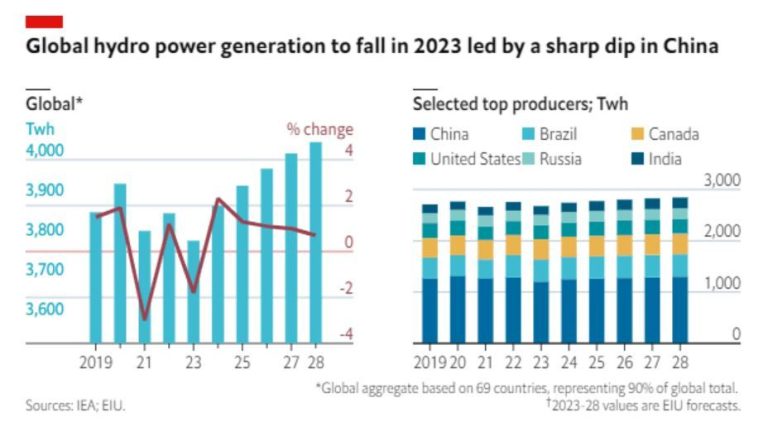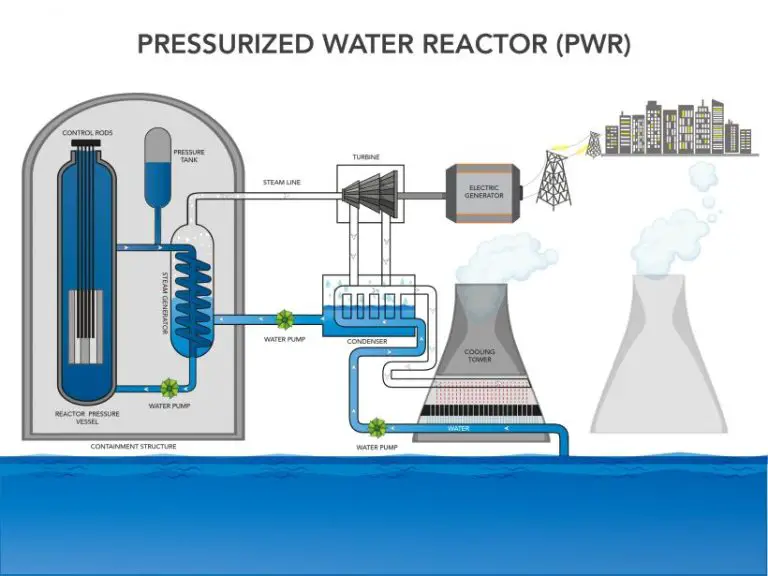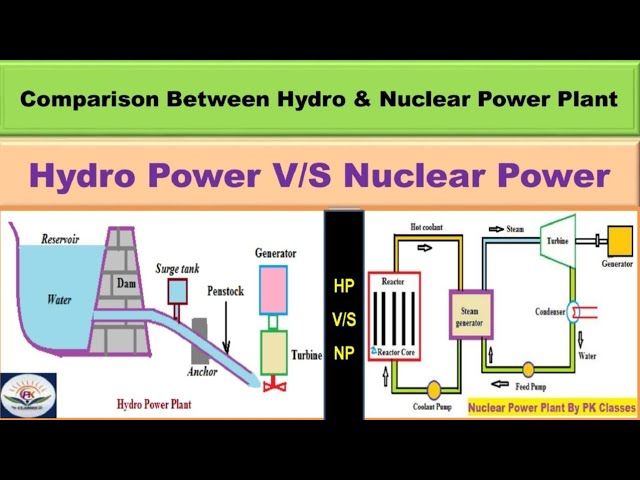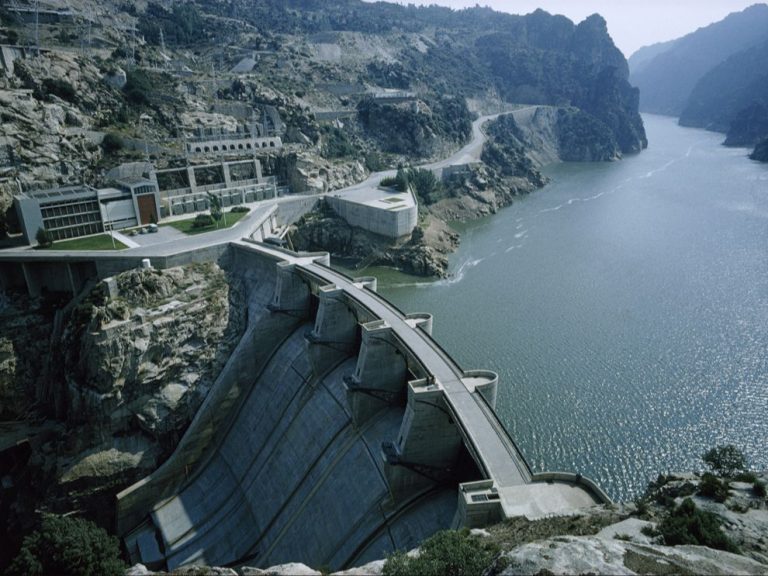Where Do We Get Hydroelectric Energy?
What is Hydroelectric Power?
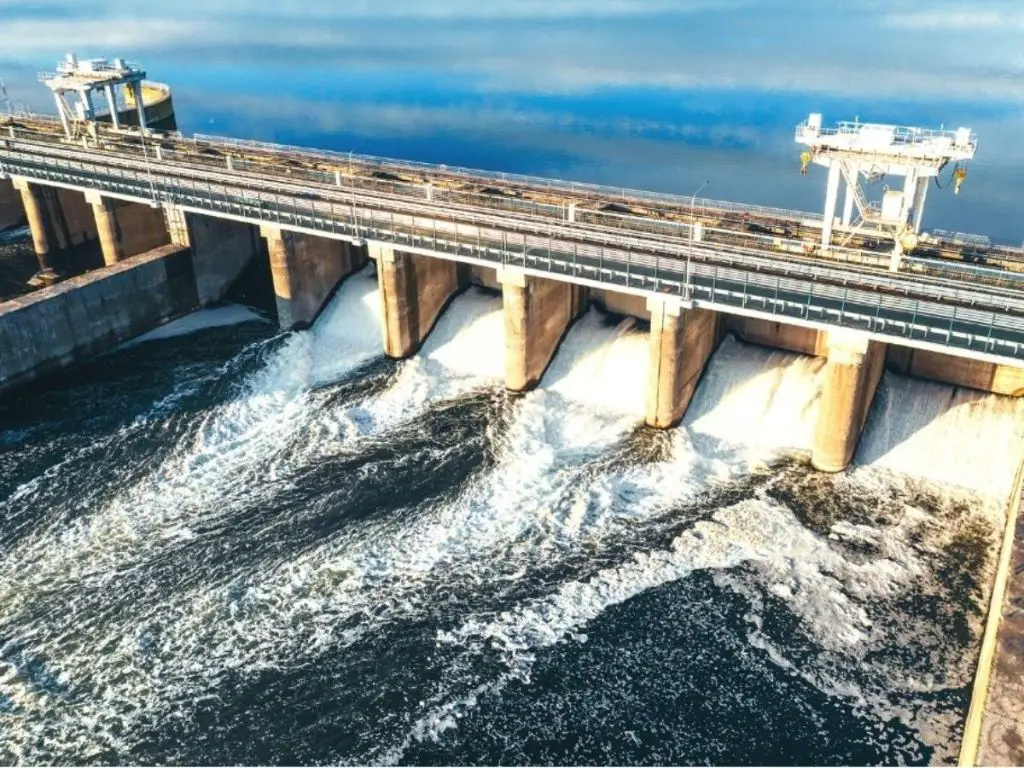
Hydroelectric power is a form of renewable energy that generates electricity by harnessing the power of flowing water. It is considered a renewable energy source because it relies on the water cycle, in which water evaporates, forms clouds, precipitates, and flows back down to the ocean (National Geographic).
Hydroelectric power plants generate electricity by damming rivers and directing water through large turbines connected to generators. The moving water spins the turbines, which then spin magnets inside the generators to produce electricity (Britannica). The force of gravity causes the water to flow downward through the dam and turn the turbine blades. The amount of electricity generated depends on the volume of water flow and the vertical distance the water falls (National Geographic).
Overall, hydroelectric power is a clean, renewable source of energy that relies on the natural water cycle and the force of gravity to generate electricity.
History of Hydroelectric Power
Although basic hydropower technology has existed for thousands of years, the first industrial use of hydropower to generate electricity is attributed to an installation in Niagara Falls, New York in 1879 by Thomas Edison. The first fully industrial and operational hydroelectric plant was built in Appleton, Wisconsin in 1882. Throughout the late 1880s and early 1900s, many small hydroelectric plants were constructed along rivers in mountainous and hilly areas. The use of hydropower expanded significantly in the early 20th century. Major projects like the Hoover Dam, completed in 1936, helped spur further hydroelectric development. Hydroelectric plants of all sizes now exist in over 150 countries worldwide, providing over 16% of the world’s electricity. Continual technological improvements have increased efficiency and capacity over time.
Hydroelectric Dams
Dams are a critical component of hydroelectric power generation. There are several types of dams used for hydroelectricity, including embankment dams, gravity dams, arch dams, and buttress dams. Embankment dams are the most common, constructed by stacking concrete, earth, rock, or tailings to form an embankment. Gravity dams use their own weight and concrete to resist the water pressure pushing against them. Arch dams are curved structures relying on an arching effect for support. Buttress dams have supports on the downstream side to improve stability.
Dams work to generate electricity by controlling and manipulating the flow of water. The dam stores water in a reservoir on the upstream side. The water is then released through intake gates on the downstream side, flowing through tunnels called penstocks. At the end of the penstock is a turbine connected to a generator. As the water spins the turbine blades, rotational energy is transferred to the generator to produce electricity. Generators are connected to transformers to increase voltage before transporting electricity via transmission lines.
Some of the most famous hydroelectric dams include the Hoover Dam on the Colorado River, the Three Gorges Dam in China, and the Itaipu Dam on the Brazil-Paraguay border. The Hoover Dam was an engineering marvel when completed in 1936, standing 726 feet tall and containing enough concrete to pave a two-lane highway from San Francisco to New York City. The massive Three Gorges Dam in China is the world’s largest power station, spanning 1.4 miles and providing 22,500 megawatts of power. The Itaipu Dam is the world’s largest supplier of renewable electricity.
Sources:
https://www.usgs.gov/special-topics/water-science-school/science/hydroelectric-power-how-it-works
https://www.tva.com/energy/our-power-system/hydroelectric/how-hydroelectric-power-works
Rivers Used for Hydroelectricity
Rivers around the world have been tapped to harness the power of flowing water for hydroelectric energy production. Some of the major rivers used for hydroelectric power globally include:
- The Yangtze River in China, home to the Three Gorges Dam, the world’s largest power station with 22,500 MW of installed capacity 1
- The Itaipu Dam on the Paraná River bordering Brazil and Paraguay generates 14,000 MW, making it the world’s second largest hydro plant
- Canada’s La Grande River system powers massive generating stations like the Robert-Bourassa facility (5,616 MW)
- Other major rivers with large hydro dams globally are the Columbia River (USA/Canada), Rhône River (Switzerland/France), Yenisei River (Russia), and Salween River (Myanmar).
In the United States, some of the top rivers used for hydroelectric generation include:
- Columbia River with over 20 dams and around 20,000 MW of installed capacity, the largest hydro system in the US 2
- Missouri River, harnessing around 3,000 MW from various dams like Fort Peck in Montana
- Mississippi River with major plants like Keokuk in Iowa
- Niagara River, generating huge amounts of power from Niagara Falls at plants like the 2,400 MW Robert Moses Niagara in New York
Capacity and Generation
Global installed hydroelectric capacity reached over 1,400 gigawatts (GW) in 2021, accounting for over 16% of total global electricity generation and 71% of global renewable electricity generation [1]. China leads the world with a massive 414.8 GW of installed hydro capacity as of 2022, representing over 29% of the global total. Brazil comes in second with 109 GW, followed by Canada (83.6 GW), the United States (80 GW), and Russia (48 GW) [2].
In terms of generation, China generated 1,234 terawatt-hours (TWh) from hydroelectricity in 2022, representing 29% of global output. Brazil produced the second most at 428 TWh, followed by Canada (392 TWh), the United States (275 TWh), and Russia (178 TWh) [3].
The United States has 80 GW of installed hydro capacity as of 2022, generating 275 TWh of electricity annually. This represents 7% of total U.S. generation capacity and 6.5% of total electricity generation [4]. Major hydroelectric facilities are concentrated in the West, Northwest, and Southeast regions where suitable rivers and topography exist.
Advantages
Hydroelectric power has several key advantages that make it an important renewable energy source (https://www.energy.gov/eere/water/benefits-hydropower):
Renewable – Hydropower is considered renewable since it relies on the water cycle and does not deplete resources or produce emissions. The water cycle continuously renews the water in hydroelectric facilities.
Reliable – Hydropower can generate electricity 24/7 and adjust output to meet demand. Hydroelectric facilities have reliability factors of 90-95% versus 45-60% for thermal plants.
Low Operating Costs – Once a hydroelectric plant is constructed, operating costs are relatively low. Fuel is not needed to generate electricity.
Energy Storage Capabilities – Hydroelectric facilities can store water in reservoirs to quickly ramp up electricity generation when needed (https://www.enelgreenpower.com/learning-hub/renewable-energies/hydroelectric-energy/advantages). This makes hydropower a flexible grid resource.
Disadvantages of Hydroelectric Power
While hydroelectric power has many benefits, there are some notable disadvantages to be aware of:
High upfront costs – Constructing hydroelectric dams and power plants requires substantial upfront investments. The costs can run into the billions of dollars depending on the scale of the project.
Impact on rivers and wildlife – Damming rivers can disrupt fish migration routes, change water levels downstream, and flood large areas of land. This can negatively impact local wildlife habitats and ecosystems.
Drought vulnerability – Hydroelectric output depends on water flows, which vary seasonally and decline during droughts. Multi-year droughts can significantly reduce energy production capabilities.
Limited suitable sites – Dams require specific terrain and geological conditions only found in certain locations. The best sites are often already in use, making expansion of hydroelectric power geographically constrained.
Overall, hydroelectricity has tradeoffs between clean renewable energy production and potential environmental consequences. Careful planning and mitigation strategies are needed to minimize the downsides.
Environmental Impacts
While hydroelectric power is a low-emission renewable energy source, the dams and reservoirs used for hydropower generation can have significant environmental impacts including:
-
Disruption of river ecosystems – Dams disrupt the natural flow of rivers and can impact the migration and spawning of fish species that rely on running water. Flooding land upstream also destroys wildlife habitat.[1]
-
Wildlife disruption – Reservoirs flood valleys and forests, displacing terrestrial species. Reservoirs also fragment habitat.[2]
-
Altered downstream flows – Dams hold back sediments leading to erosion downstream, and alter natural flood/drought cycles.[1]
-
Methane emissions – Organic matter decaying in reservoirs emits methane, a potent greenhouse gas.[2]
[1] https://www.ucsusa.org/resources/environmental-impacts-hydroelectric-power
[2] https://www.eia.gov/energyexplained/hydropower/hydropower-and-the-environment.php
Future of Hydroelectricity
The future of hydroelectric power involves improving technology and efficiency at existing facilities as well as investing in new low-impact hydro projects. There is continued interest in sustainability efforts and minimizing the environmental footprint of hydropower.
Upgrading turbines, generators, and other infrastructure at existing dams can boost output and efficiency. Variable speed turbines that adjust to river flow allow for more consistent power generation. There are also new turbine designs such as cross-flow turbines that work well for low-head dams. Digital sensors and automation can also optimize operations.
Small-scale and low-impact hydro projects are being explored more as a renewable energy source. These minimize habitat disruption by utilizing existing infrastructure like pipelines, irrigation canals, and industrial water systems. Low-head in-stream turbine technologies can generate power while allowing fish to pass through safely.
The hydropower industry is focused on sustainability initiatives to preserve watersheds and ecosystems affected by dams. Upgrading fish ladders, maintaining minimum downstream river flows, and sediment management help mitigate environmental impacts. Selectively removing outdated dams also helps restore river habitats.
Notable Hydroelectric Projects
Some of the largest and most notable hydroelectric dams in the world include:
The Hoover Dam is located on the Colorado River in the Black Canyon between the states of Arizona and Nevada. With a generating capacity of over 2,000 megawatts, it was the world’s largest hydroelectric power station when it was completed in 1936 (https://en.wikipedia.org/wiki/List_of_largest_hydroelectric_power_stations).
The Three Gorges Dam in China is currently the world’s largest power station with a capacity of 22,500 megawatts. Completed in 2012, this massive dam spans the Yangtze River and also helps control flooding (https://www.weforum.org/agenda/2022/12/worlds-largest-hydroelectric-dams-renewable-energy/).
The Itaipu Dam on the border between Brazil and Paraguay has a generating capacity of 14,000 megawatts, making it one of the largest hydroelectric dams in the world. It supplies around 17% of Brazil’s electricity and 75% of Paraguay’s electricity needs.
The Grand Coulee Dam in Washington state was the largest power station in the world when constructed in 1942 with 6,800 megawatts of capacity. Part of the Columbia River Basin project, it is a major source of hydroelectricity in the western United States.

